How To Fix A Black Screen Iphone 8
How to fix black screen with safe mode on Windows 10
If you do not have access to the desktop, you will have to use the "Advanced startup" options to access Windows 10 in safe mode to troubleshoot and fix the black screen issue.
Open Advanced startup using three-fail boot method
To access the Windows 10 advanced options, use these steps:
- Start the computer.
-
As soon as the Windows logo appears on the screen, press the power button to interrupt the boot sequence.
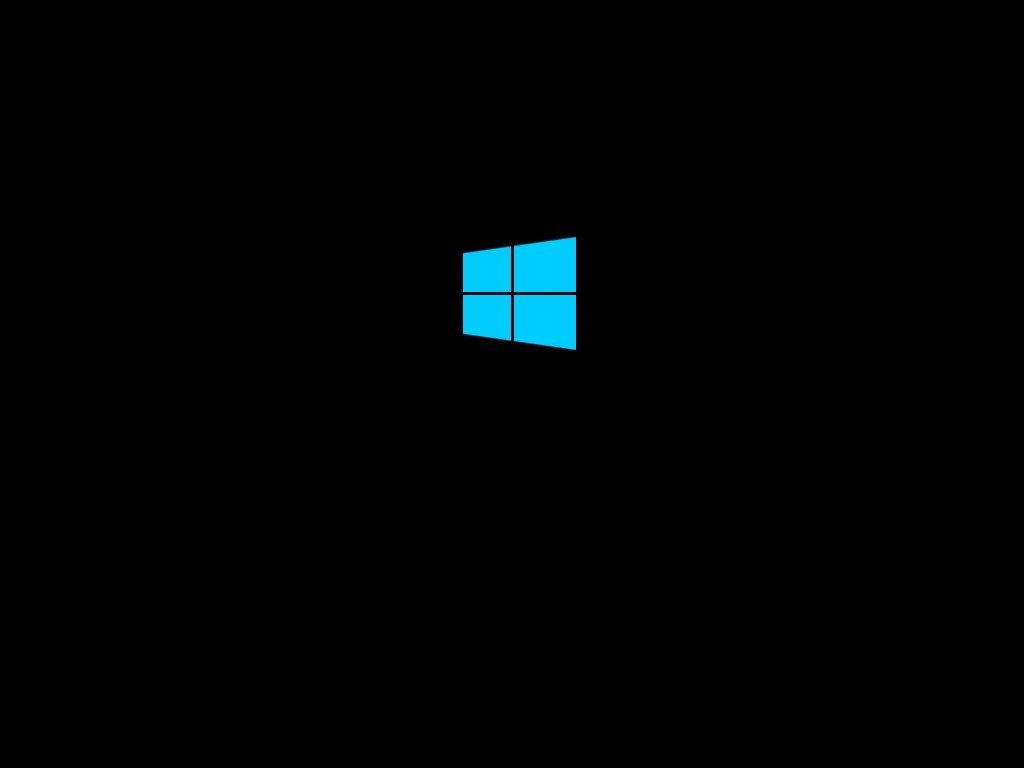 Source: Windows Central
Source: Windows Central - Repeat steps No. 1 and 2 two more times.
After the third interruption, Windows 10 will start the Automatic Repair environment, where you will find the option to access the Advanced startup. Then continue with the steps below to boot the device in safe mode.
Open Advanced startup using bootable media method
Alternatively, you can use a USB flash drive to access the advanced settings using these steps:
-
Start computer using a USB flash drive.
- Quick tip: If the device is not starting from USB, you will have to change the motherboard's BIOS settings to make sure it can boot from USB. You can usually access the BIOS by powering up the device and pressing one of the functions, Delete, or Esc keys. However, you may need to check your manufacturer's support website for more specific details.
- Click the Next button.
-
Click the Repair your computer link in the bottom-left corner.
 Source: Windows Central
Source: Windows Central
Once you complete the steps, continue with the instructions to access safe mode on Windows 10.
Boot Windows 10 in safe mode
To boot Windows 10 in safe mode through Advanced startup, use these steps:
- Click the Troubleshoot option.
- Click the Advanced options button.
-
Click the Startup Settings option.
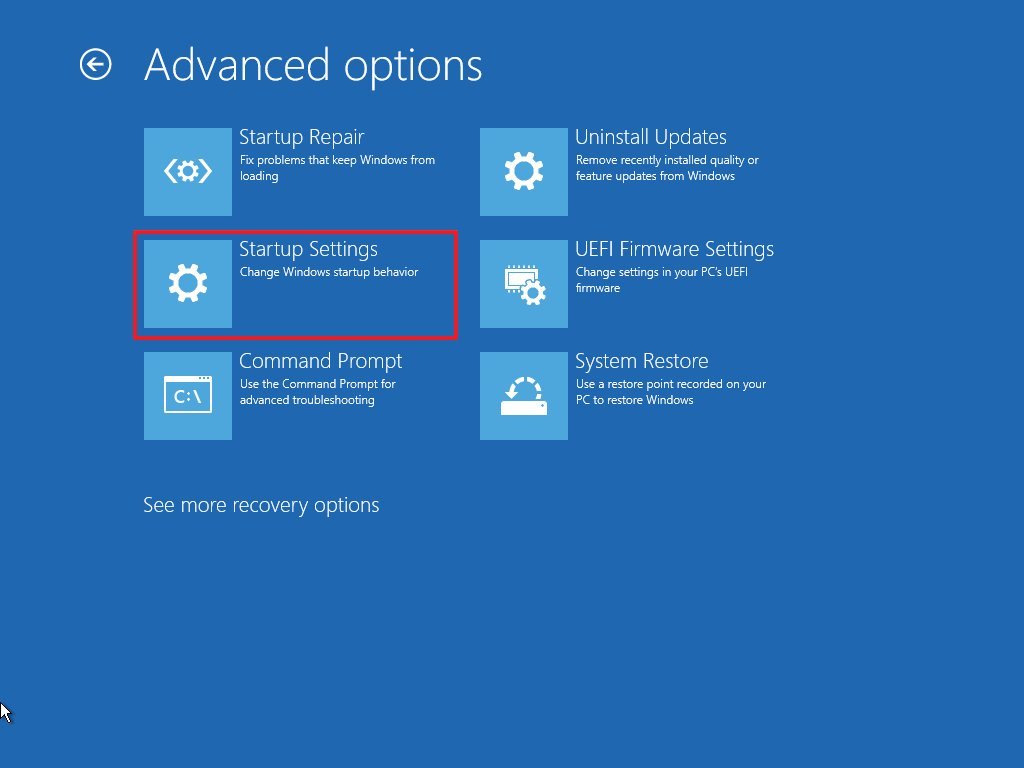 Source: Windows Central
Source: Windows Central -
Click the Restart button.
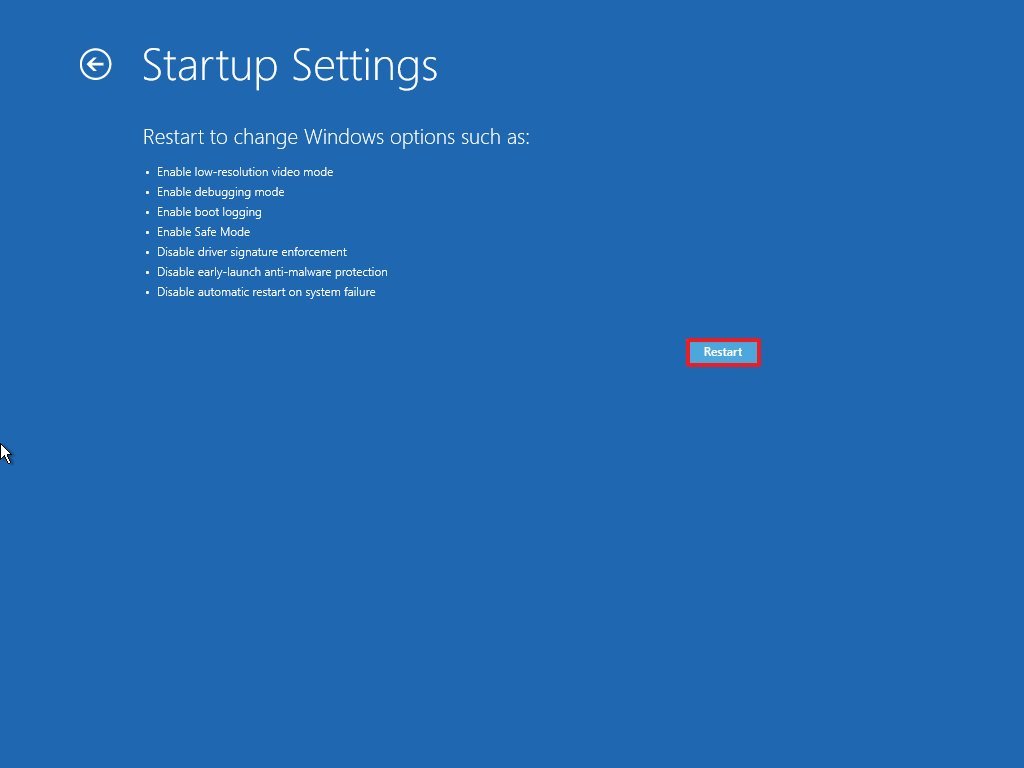 Source: Windows Central
Source: Windows Central -
While in the "Startup Settings," press the 5 or F5 key to select the Enable Safe Mode with Networking option.
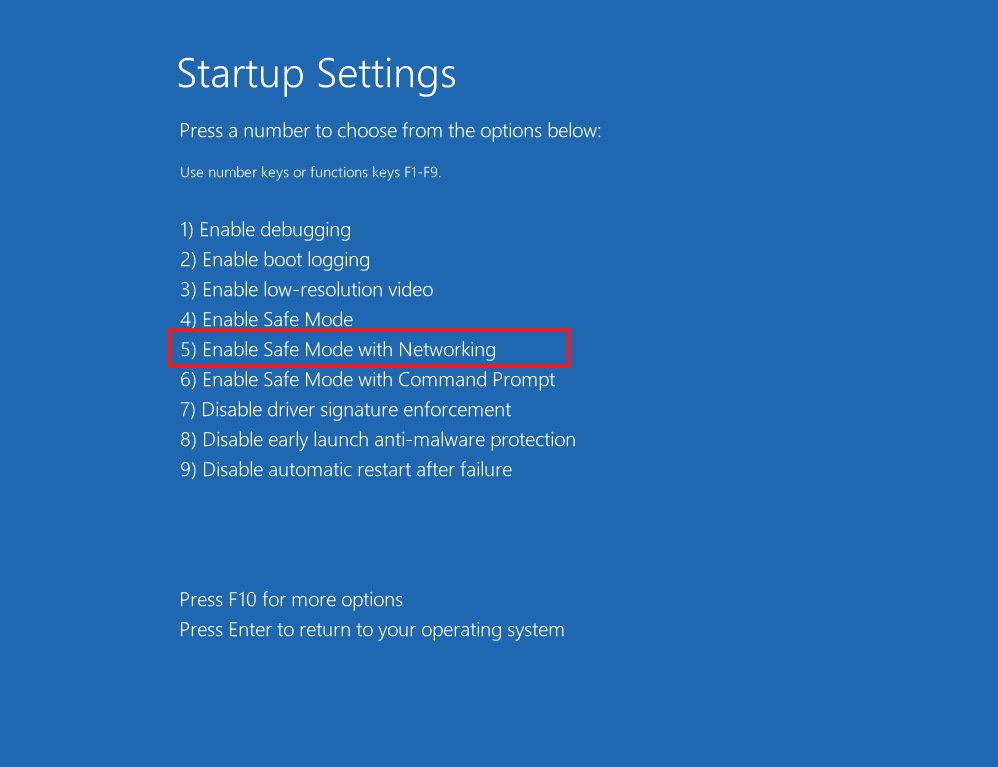 Source: Windows Central
Source: Windows Central
After the computer boots in safe mode, you can use several troubleshooting steps to fix the black screen problem. For example, you can reinstall the graphics driver, remove buggy updates, change system settings, and more (see instructions below).
Perform Windows 10 clean boot
Usually, Windows 10 loads services, drivers, and apps during startup, which will remain running in the background. If one or more components are not working correctly, you are likely to see a black screen.
A clean boot allows you to start Windows 10 with a minimal set of services, drivers, and apps, which can help you figure out if something running in the background is causing the screen to go completely dark.
On Windows 10, a clean boot is similar to safe mode, but it allows you to re-enable services individually to determine what component is causing the issue.
To perform a clean boot of Windows 10, use these steps:
- Open Start.
- Search for msconfig and click the top result to open the System Configuration app.
- Click the Services tab.
- Check the Hide all Microsoft services option.
-
Click the Disable all button.
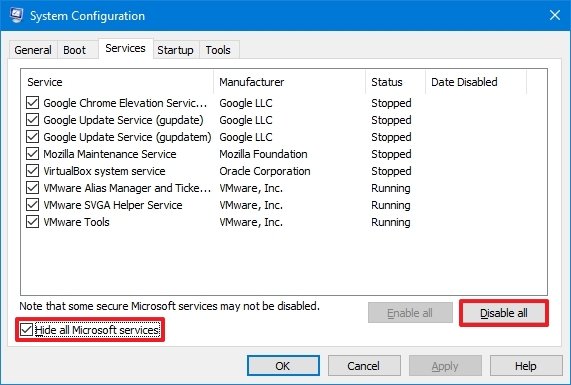 Source: Windows Central
Source: Windows Central - Click the Apply button.
- Click the Startup tab.
- Click the Open Task Manager option.
- Click the Startup tab.
-
Select each application, and click the Disable button in the bottom-right corner.
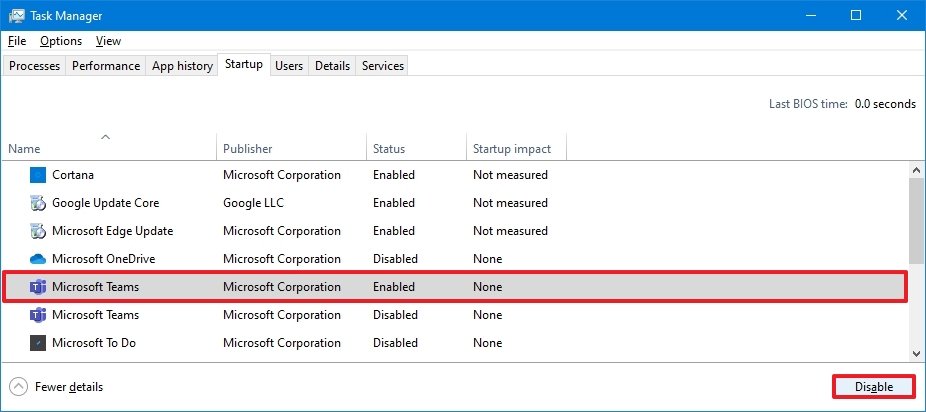 Source: Windows Central
Source: Windows Central - Close Task Manager.
- Click the OK button.
- Restart the computer.
These steps won't fix the problem, but they will give you an idea of where to start looking to resolve the black screen problem.
Troubleshoot black screen using clean boot
If, after restarting the computer, the black screen disappears, then you will know the problem is one of the system processes.
To fix the issue, re-enable the items one at a time and restart the device to see which one is causing the black screen with these steps:
- Open Start.
- Search for msconfig and click the top result to open the System Configuration app.
- Click the Services tab.
- Check the Hide all Microsoft services option.
-
Check one of the services.
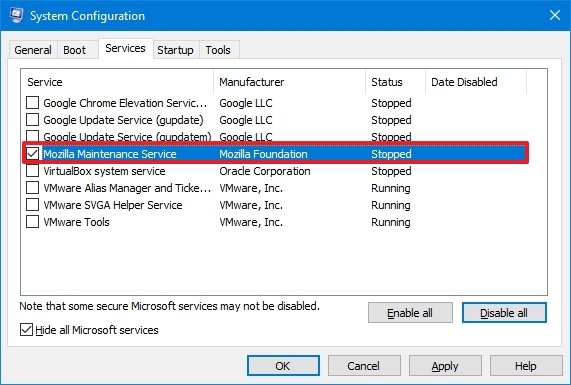 Source: Windows Central
Source: Windows Central - Click the Apply button.
- Click the OK button.
- Restart the computer.
Once you complete the steps, repeat the steps for every item until you find the one that is causing the problem.
Re-enable startup items
If none of the services seem to be the issue, use these steps to re-enable the startup items:
- Open Start.
- Search for Task Manager.
- Click the Startup tab.
-
Select an app and click the Enable button in the bottom-right corner.
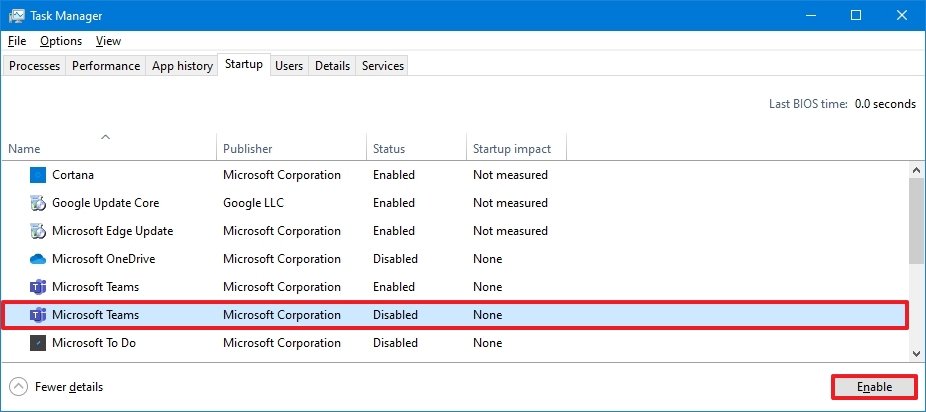 Source: Windows Central
Source: Windows Central - Close Task Manager.
- Restart the computer.
After you complete the steps, repeat the instructions for every item until figuring out which app is causing the black screen.
If you need to revert the changes, use the same instructions outlined above to perform a clean boot, but on step No. 5, make sure to click the Enable all button, and on step No. 10, click the Enable button for each application that was previously enabled.
Reinstall or rollback graphics driver
Usually, a black screen could result from a compatibility issue with a graphics driver update that you may have installed through Windows Update or manually. Other times, it could be the case that the driver got corrupted for unknown reasons.
Reinstall graphics driver
To reinstall the graphics driver while in safe mode, use these steps:
- Open Start.
- Search for Device Manager and click the top result to open the app.
- Expand the Display Adapters branch.
-
Right-click the video adapter and select the Uninstall device option.
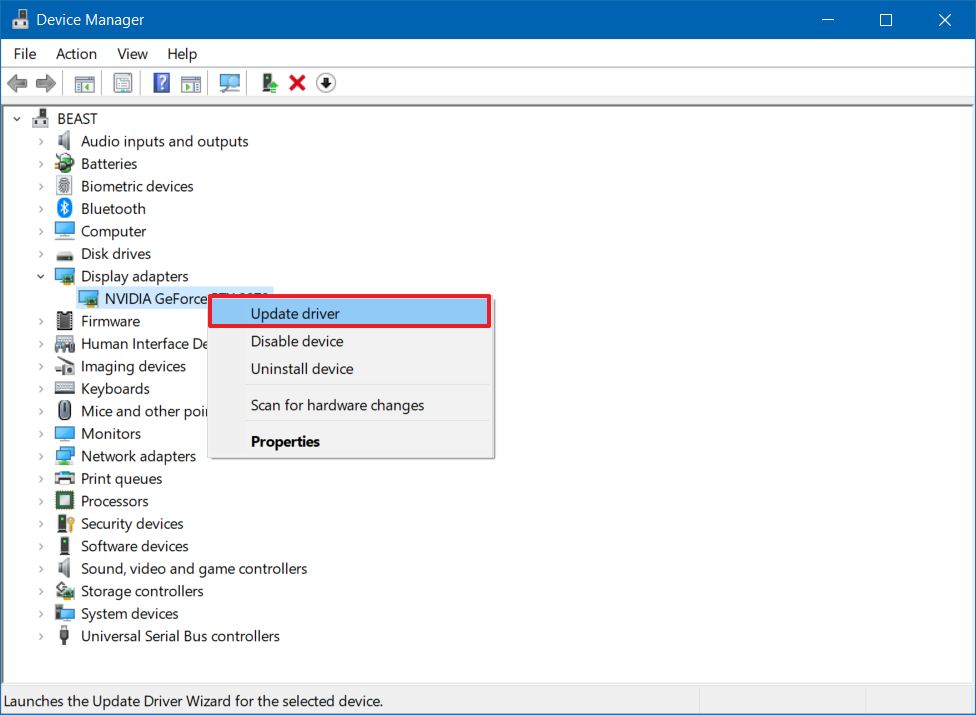 Source: Windows Central
Source: Windows Central Quick tip: Alternatively, you can also select the Delete the driver software for this device option to remove the driver from the computer. Sometimes, this is recommended, but if Windows 10 can't find the driver online, you will need to download it from your manufacturer's support website.
- Click the OK button.
- Restart the computer.
Once the device restarts, Windows 10 will try to reinstall the graphics driver, automatically resolving the black screen problem.
Alternatively, you can also uninstall the video drivers from the "Apps & features" settings page by selecting the device driver package and clicking the Uninstall button.
If the problem occurs immediately after updating to a new version of Windows 10, then it is likely that the device is experiencing a compatibility problem. In this case, you may need to download and install a newer version of the driver from the computer or graphics card manufacturer to resolve the issue.
Rollback graphics driver
When the black screen issue occurs after applying an update, you may be able to roll back to the previous version of the driver.
To roll back a previous version of a driver, use these steps:
- Open Start.
- Search for Device Manager and click the top result to open the app.
- Expand the Display Adapters branch.
-
Right-click the video card and select the Properties option.
 Source: Windows Central
Source: Windows Central - Click the Driver tab.
-
Click the Roll Back Driver button.
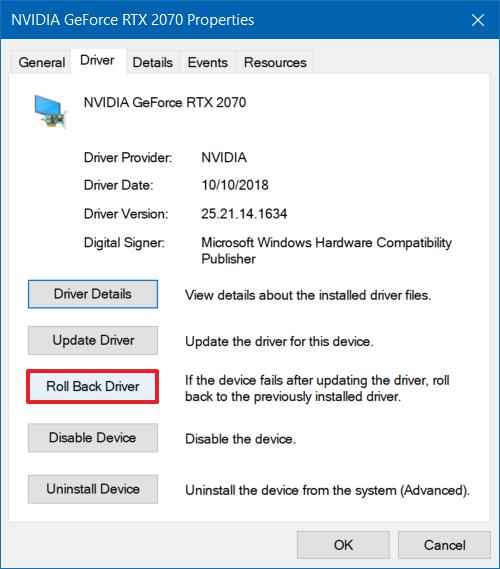 Source: Windows Central
Source: Windows Central -
Select a reason to enable the option to roll back.
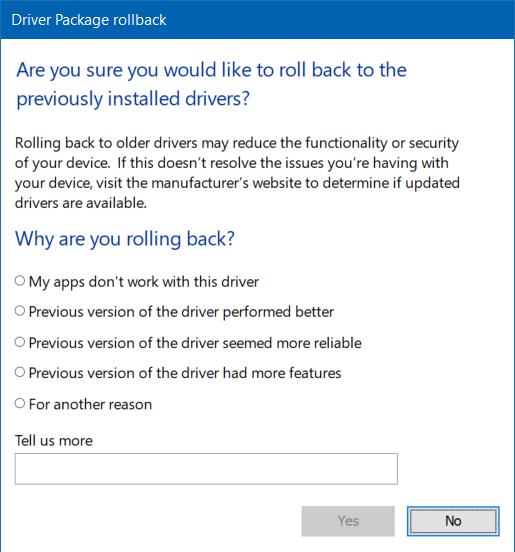 Source: Windows Central
Source: Windows Central - Click the Yes button.
- Restart the computer.
After you complete the steps, Windows 10 will uninstall the driver, and the previous version will be restored.
If the Roll Back Driver option is not available, Windows 10 does not have a previous version of the driver. If an earlier version of the driver was working correctly, you might be able to download an older version from your manufacturer's support website.
Disable Fast Startup
Sometimes, the fast startup feature may be why the computer ends up with a black screen. On Windows 10, fast startup is a feature available in specific hardware configurations to speed up the boot process. However, the feature is known to cause problems. If it's causing a black screen, you can disable it to mitigate the issue.
To disable fast startup on Windows 10, use these steps:
- Open Settings.
- Click on System.
- Click on Power & sleep.
- Under the "Related settings" section, click the Additional power settings option.
-
Select the Choose what the power button does option on the left pane.
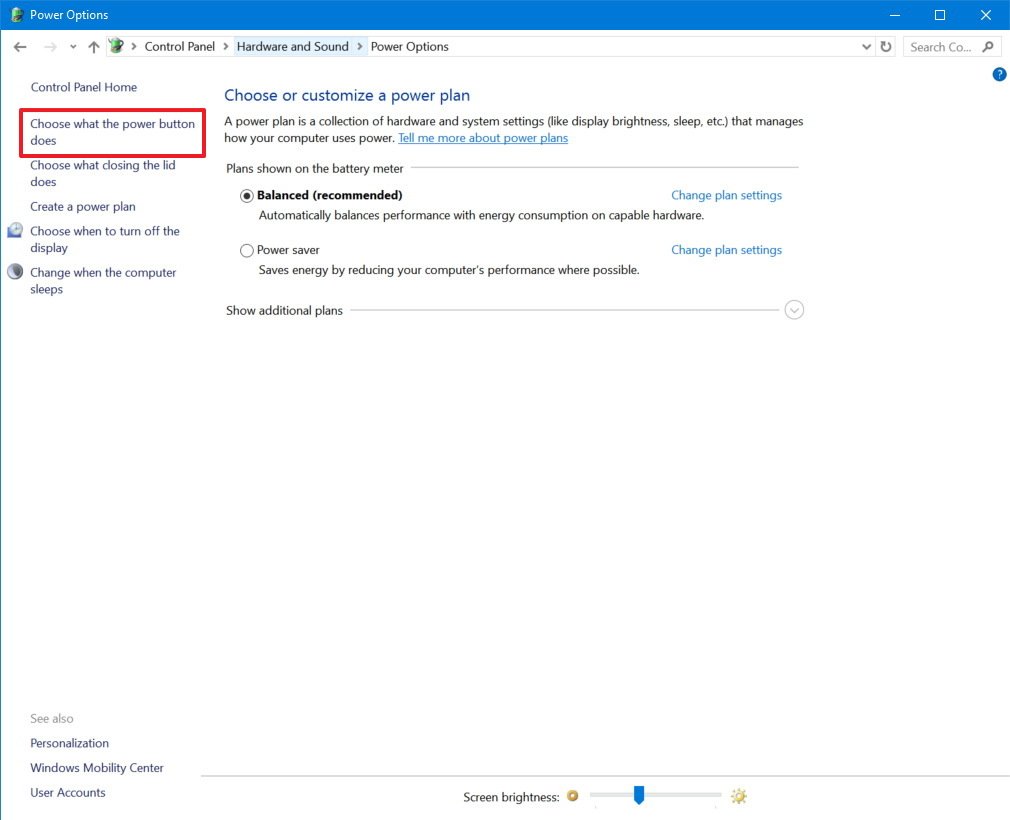 Source: Windows Central
Source: Windows Central -
Click the Change settings that are currently unavailable option.
 Source: Windows Central
Source: Windows Central -
Clear the Turn on fast startup (recommended) option.
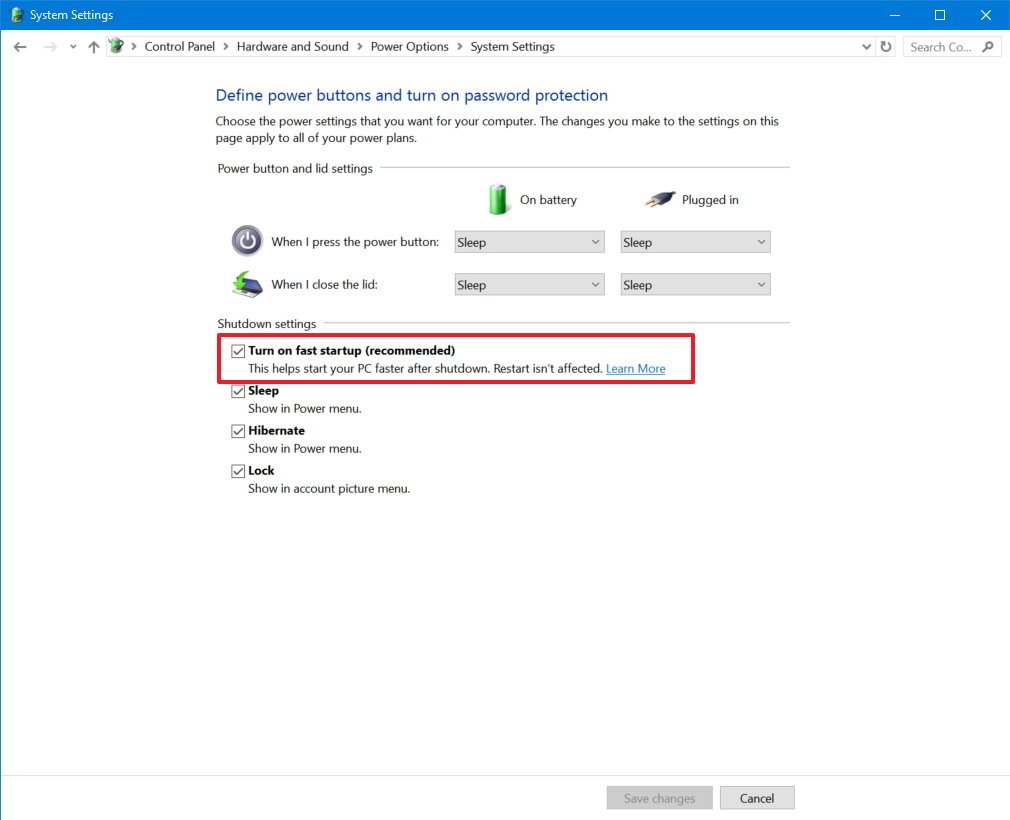 Source: Windows Central
Source: Windows Central - Click the Save changes button.
- Restart the computer.
After restarting the device, you should no longer experience the black screen problem.
Disable high contrast
On Windows 10, the high contrast feature can also cause the black screen problem.
To disable high contrast on Windows 10 while in safe mode, use these steps:
- Open Settings.
- Click on Ease of Access.
- Click on High contrast.
-
Turn off the Use high contrast toggle switch.
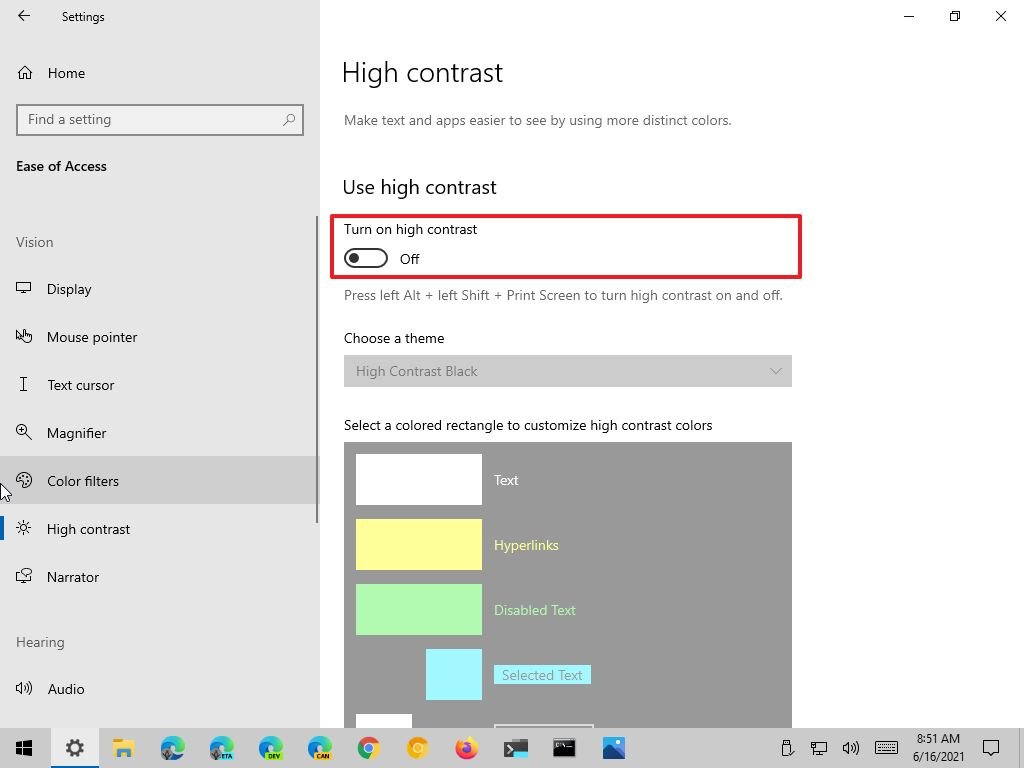 Source: Windows Central
Source: Windows Central
Once you complete the steps, restart the computer to confirm the black screen problem has been fixed.
Stop RunOnce process
Windows 10 also includes the RunOnce feature to specify a series of commands that should run once during the next reboot, but it can sometimes cause the screen to go black on a desktop computer or laptop.
To stop the RunOnce process, use these steps:
- Open Start.
- Search for Task Manager and click the top result to open the app.
- Click the Processes tab.
- Select the RunOnce process and click the End task button.
- (Optional) Click the Services tab (if the process was not in the "Processes" tab).
- Right-click the RunOnce item, and select the Stop button.
- Restart the computer.
If the RunOnce process was causing the problem, you should be able to start using the computer normally.
Uninstall quality updates
It's no longer uncommon for updates to roll out with bugs and compatibility issues. If your device recently received an update and you do not see a black screen, uninstalling the patch may resolve the problem.
While in Safe mode, you won't be able to access the "Update & Security" settings to remove a quality update, but you can still use Control Panel.
To uninstall Windows 10 updates in Safe mode, use these steps:
- Open Start.
- Search for Control Panel and click the top result to open the app.
- Click on Programs.
- Click the Programs and Features option.
-
Click the View installed updates option from the left pane.
 Source: Windows Central
Source: Windows Central - Select the most recent update.
-
Click the Uninstall button.
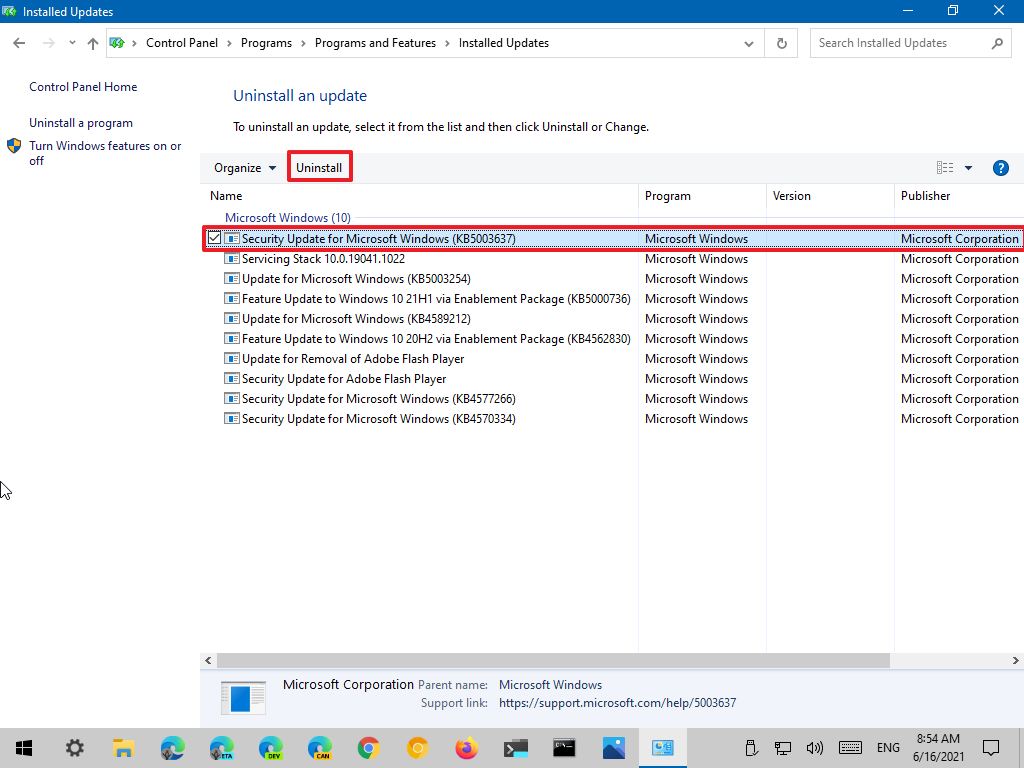 Source: Windows Central
Source: Windows Central - Restart the computer.
Once you complete the steps, the update will uninstall, and Windows 10 won't try to install it again until a subsequent update releases.
Uninstall security software
Although it's rare, security solutions like third-party antivirus and security software can also cause black screens on Windows 10.
If the device has a third-party security software, you can temporarily remove it to determine whether the app is causing the problem.
To uninstall a security app while in safe mode, use these steps:
- Open Settings.
- Click on Apps.
- Click on Apps & features.
- Under the "Apps & features" section, select the security app.
-
Click the Uninstall button.
 Source: Windows Central
Source: Windows Central - Continue with the on-screen directions (if applicable).
- Restart the computer.
After you complete the steps, the problem will resolve, and you should be able to reinstall the security app again. However, if the black screen returns, you may need to remove it one more time to mitigate the issue. You can also check the software support website to download an updated version of the app or seek additional support.
Create new Windows 10 account
A damaged account could also be the reason for a black screen on Windows 10. While in safe mode, you can create a new account to test and see if this is causing the problem. If you can use the device without a black screen, then you should consider transferring your files and settings to the new account.
To create a new account in safe mode, use these steps:
- Open Start.
- Search for Command Prompt, right-click the top result, and select the Run as administrator option.
-
Type the following command to create a new account and press Enter:
net user ACCOUNT-NAME /addIn the command, make sure to change "ACCOUNT-NAME" for the name of the account you want to create.
For example, this command creates an account named tempuser:
net user tempuser /add -
Type the following command to change the account type to "Administrator" and press Enter:
net localgroup administrators tempuser /add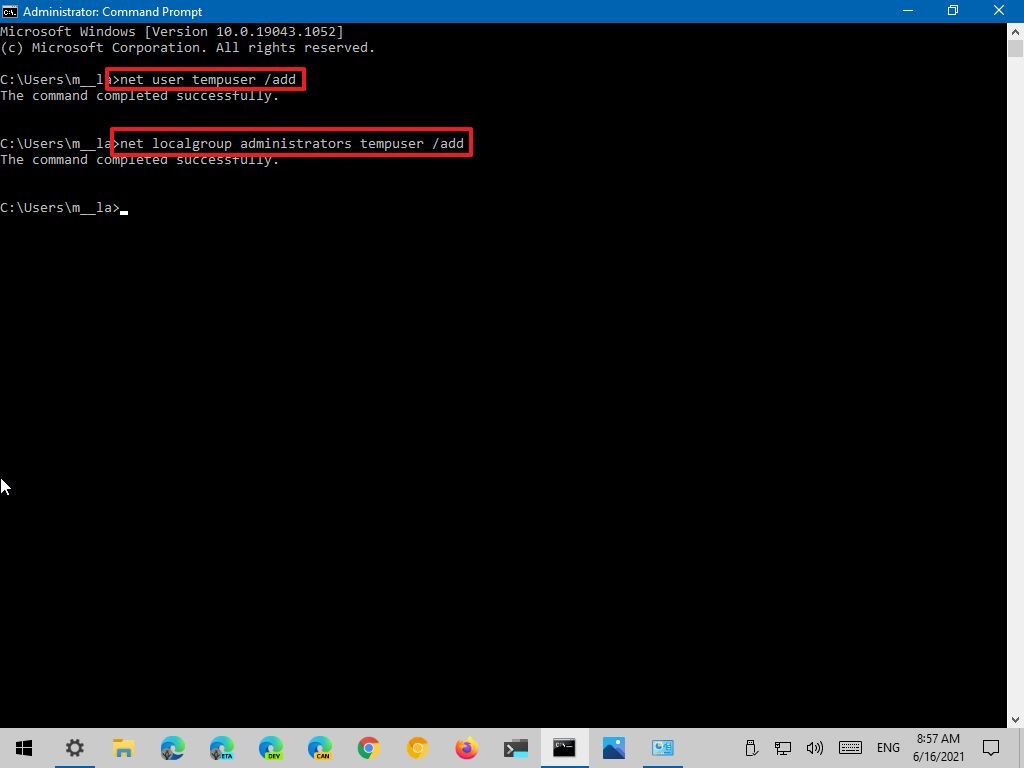 Source: Windows Central
Source: Windows Central - Restart the computer.
- Sign in with the new user account.
If the device no longer shows a black screen, the problem could be related to your old user account. Instead of troubleshooting the old account that could end up consuming a lot of time, you should refer to this guide to transfer your files, link your user profile with a Microsoft account, and delete the old account.
How To Fix A Black Screen Iphone 8
Source: https://www.windowscentral.com/how-fix-black-screen-problems-windows-10
Posted by: simonsdred2002.blogspot.com






















0 Response to "How To Fix A Black Screen Iphone 8"
Post a Comment